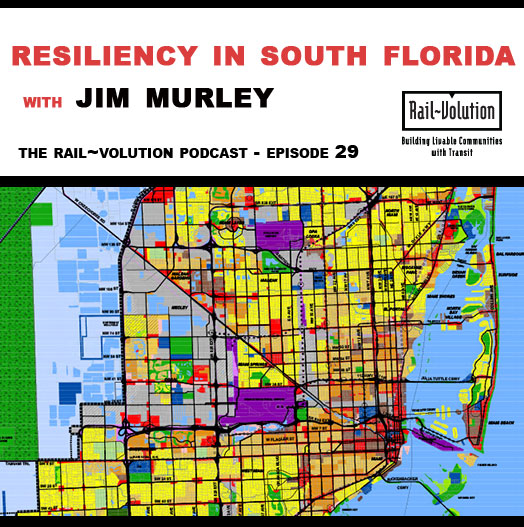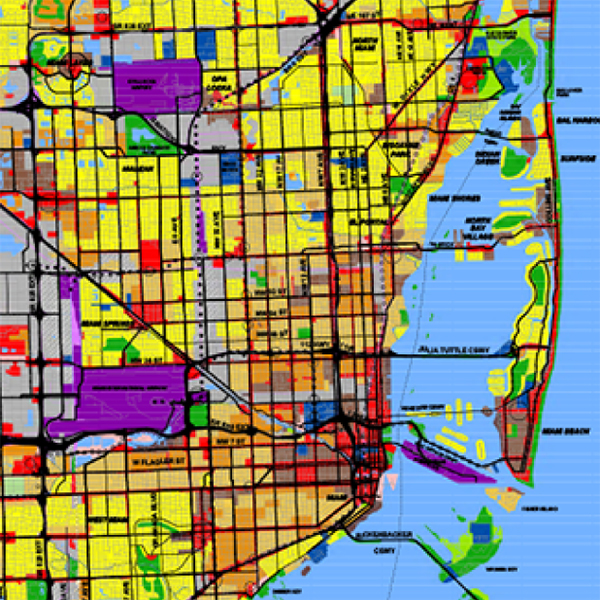Replay: Episode 29 – Resiliency in South Florida
Jim Murley, Chief Resilience Officer for Miami-Dade County, joins us, describing how South Florida takes a comprehensive approach to resilience. We spoke to him in spring 2020, as the county was beginning to respond to COVID-19. We’re replaying this episode in anticipation of Rail~Volution 2022, October 30 to November 2 in downtown Miami.

Sea level rise, Murley says, or the model of projected sea level rise, is a stress, that amplifies the impact of events, such as the storm surge from hurricanes. Resilient 305 is the comprehensive plan for managing stresses and events. It’s a wide ranging plan, with more than 60 action items, including preserving housing, improving mobility and addressing inequities. Miami-Dade County, the City of Miami and City of Miami Beach created the plan as part of the Rockefeller 100 Cities program. He credits the Rockefeller program with creating a network of CROs (chief resiliency officers) across the United States, changing and elevating the conversation about dealing with everything from storms to pandemics to climate change.
Murley brings long experience to the job – and to the podcast. He refers to foundational US law – the Coastal Lands Management Act – and more recent advances in science and policy in response to large events such as Hurricane Sandy. He describes how the South Florida Climate Change Compact laid the foundation for collaboration around resiliency. He describes the geology and settlement history of Florida – with the state’s first railroad on high ground – and how transportation, development, tourism and storms continue to define the region.
“If you have a high tide, a king tide in the fall or a storm surge from a hurricane, you’re going to be dealing with a water level that has been amplified by the sea level rise. So that stress is amplifying the event. And the other stresses we deal with are transportation and housing. To manage these impacts in a complicated urban area you have to look at them systematically together.” — Jim Murley


